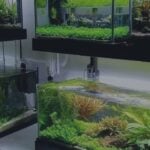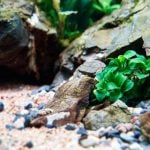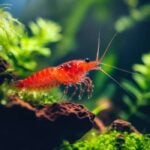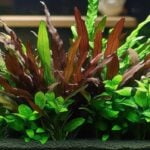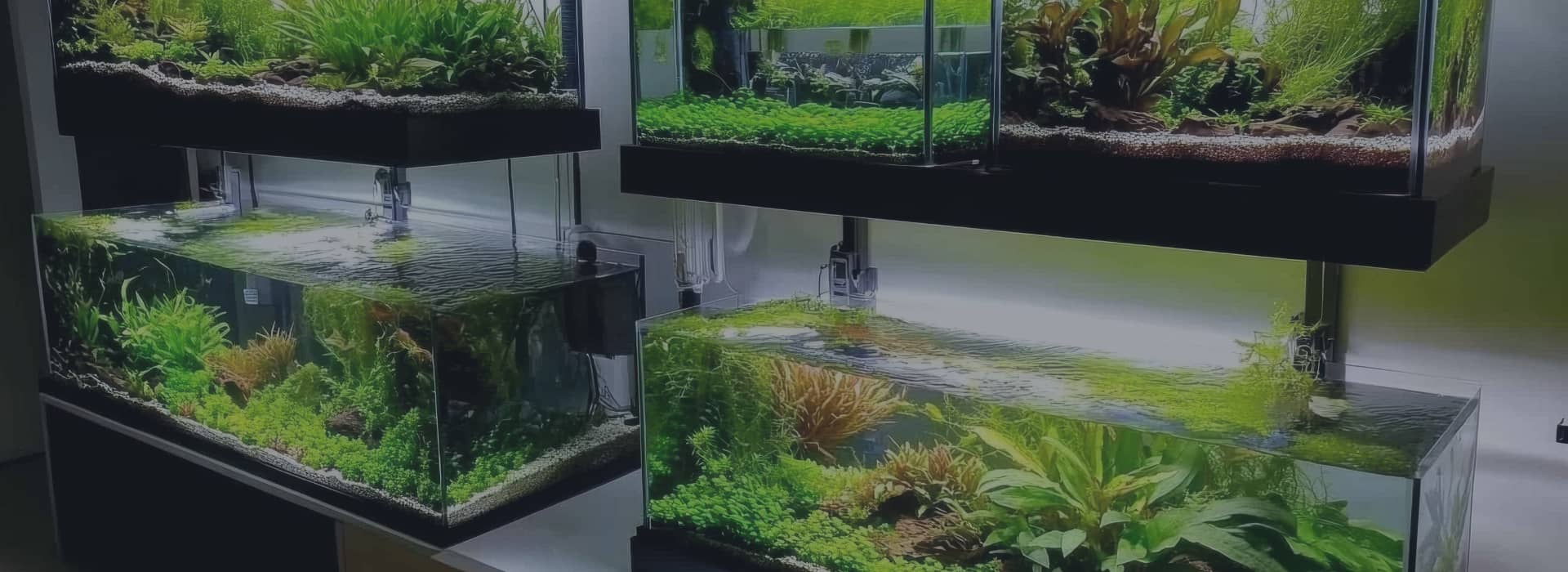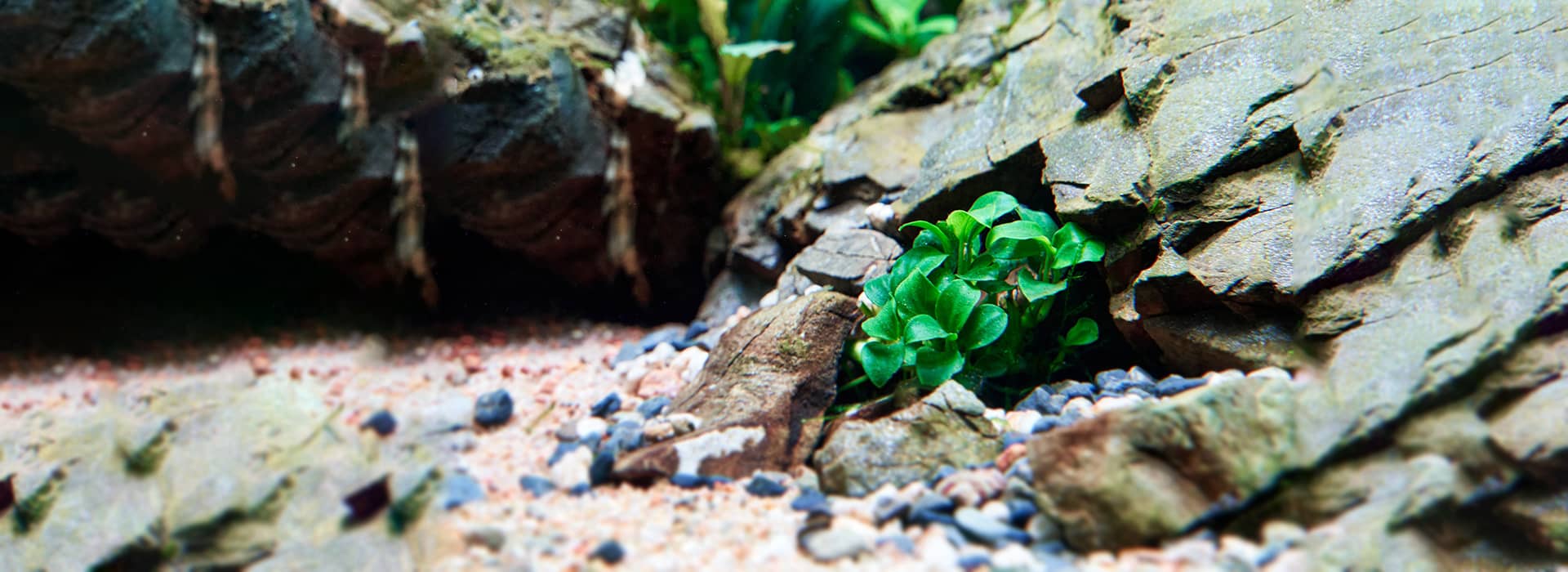A 75-gallon tank is quite a spacious setup, so it’s easy to get excited and add too many fish right away. But, it’s important to strike the right balance to avoid poor water quality and stressed fish.
Here’s a comprehensive guide to help you understand how many fish you can safely house in your 75-gallon (approximately 284 liters) tank and ensure a healthy environment.
Understanding the Basics
Before adding fish to your tank, you must consider several factors:
Fish Size and Adult Dimensions
A tiny juvenile fish can grow significantly, so you need to consider its adult size.
Fish Behavior
Some fish are more aggressive or territorial, while others are peaceful. This affects how many and which types of fish you can keep together.
Aquarium Type
A planted aquarium provides benefits like natural filtration and hiding spaces but requires maintenance that differs from a non-planted tank’s.
The Inch-Per-Gallon Rule
A commonly used guideline is the inch-per-gallon (approximately 2.54 centimeters per liter) rule, which suggests one inch of fish per gallon of water. However, this rule is quite simplistic and doesn’t account for factors like bio-load or adult fish size.
Bio-load refers to the amount of waste produced by the fish and other inhabitants in your aquarium.
This includes uneaten food, fish waste, and plant debris. A higher bio-load means more waste, which can affect water quality and require more frequent maintenance. Managing the bio-load is crucial to maintain a healthy and balanced aquarium environment.
For instance, 75 one-inch fish will create a much higher bio-load than one 75-inch fish (if such a fish existed). Therefore, while this rule can be a starting point, further considerations are necessary for a healthy aquarium.
Stocking Different Types of Fish
Small Community Fish
Species like tetras, guppies, and rasboras are ideal for beginners. They are generally peaceful and adapt well to community tanks. A 75-gallon tank comfortably houses up to 60-70 small fish (1-2 inches / 2.54-5.08 cm each).
Medium-Sized Fish
Angelfish, gouramis, and cichlids fall into this category. Aim for 15-20 fish, depending on their adult size and temperament. Monitor their behavior, as some may become territorial.
Large Fish
For 75-gallon tanks, a maximum of 5-6 larger species, such as Oscars or large cichlids, is recommended. These species require significantly more space, considering their adult size and aggressive behavior.
Bio-Load and Maintenance
Even when you have the correct number of fish, regular maintenance is crucial. Overfeeding, inadequate filtration, and infrequent water changes can result in poor water quality.
A reliable filtration system and consistent maintenance practices, such as regular water changes and cleaning the substrate, are necessary for a thriving planted aquarium.
Introducing Fish to Your Tank
Quarantine New Fish
To prevent disease introduction, quarantine new fish for a couple of weeks before adding them to your main tank.
Gradual Introduction
Introduce fish gradually to avoid shocking your aquarium’s biological balance.
Choosing the Right Plants for Your Tank
Selecting the right plants for your 75-gallon tank can greatly enhance its beauty and functionality. Here are some tips and recommendations to help you make the best choices:
Consider Your Fish
Choose plants that are compatible with your fish species. Some fish might nibble on plants, while others require specific hiding spots that plants can provide.
Light Requirements
Match the plants’ light requirements to your tank’s lighting. High-light plants need intense illumination, while low-light plants can thrive under standard aquarium lights.
Growth Rate and Maintenance
Fast-growing plants like Anacharis and Hornwort can help manage nutrients and algae but may require more frequent trimming. Slower-growing plants like Java Fern and Anubias need less maintenance.
Substrate Compatibility
Ensure the plants you choose are compatible with your substrate. Rooted plants like Amazon Swords need nutrient-rich substrate while floating plants like Duckweed don’t.
Aquascaping Goals
Consider your overall design and the role each plant will play. Use tall plants like Vallisneria in the back, mid-height plants like Cryptocoryne in the middle, and carpet plants like Dwarf Hairgrass in the front.
Hardiness and Adaptability
Hardy plants such as Java Moss, Java Fern, and Anubias are great choices for beginners because they are easy to care for and adapt well to various conditions.
Common Mistakes to Avoid
Overstocking
Adding too many fish at once can overwhelm your tank’s filtration system, leading to poor water quality.
Ignoring Compatibility
Mixing incompatible species can result in stress, aggression, and health issues.
Neglecting Maintenance
Inconsistent maintenance can lead to the build-up of waste and toxins, affecting the health of your fish.
Overfeeding
Excess food can increase the bio-load, leading to water quality issues.
Skipping Quarantine
Introducing new fish without quarantine can introduce diseases and parasites to your tank.
Frequently Asked Questions
Can I mix different types of fish in a 75-gallon tank?
Yes, you can mix different types of fish, but it’s important to consider their compatibility, behavior, and environmental needs. Ensure that aggressive or territorial species have enough space and hiding spots to reduce stress and conflict.
How can I tell if my tank is overstocked?
Signs of overstocking include poor water quality, frequent fish illness, aggressive behavior, and slow growth. Regular water testing and monitoring fish behavior can help you identify overstocked tanks.
What is the ideal temperature for a 75-gallon planted aquarium?
The ideal temperature depends on the fish species you keep. Tropical fish generally thrive at temperatures between 74-80°F (23-27°C), while some species may have specific requirements.
How often should I change the water in my 75-gallon tank?
Perform partial water changes of about 10-20% weekly for a healthy environment. Regular water changes help maintain water quality and reduce the build-up of harmful substances.
Can I keep bottom-dwelling fish with other species?
Yes, bottom-dwelling fish like corydoras or plecos can coexist with other species. Ensure you provide sufficient hiding spots and suitable substrate to make them comfortable.
How long should I run the lights in a planted aquarium?
Aim to run the lights for 8-10 hours a day. Too much light can lead to algae growth, while too little can hinder plant growth.
What type of filter is best for a 75-gallon tank?
A canister or a high-quality hang-on-back filter is often recommended for a 75-gallon tank. They provide efficient mechanical, chemical, and biological filtration, ensuring clean and healthy water.
Final Thoughts
A 75-gallon tank offers ample space for a variety of fish species. This spacious environment allows you to create a diverse and vibrant aquatic ecosystem.
Creating a balanced environment with an appropriate mix of fish, plants, and decorations not only enhances visual appeal but also promotes the well-being of your aquatic pets. Consistent maintenance and vigilant monitoring are essential for maintaining a healthy aquarium.
Take the time to research and plan so you can create a thriving, beautiful aquarium that brings joy and tranquility to your home.
